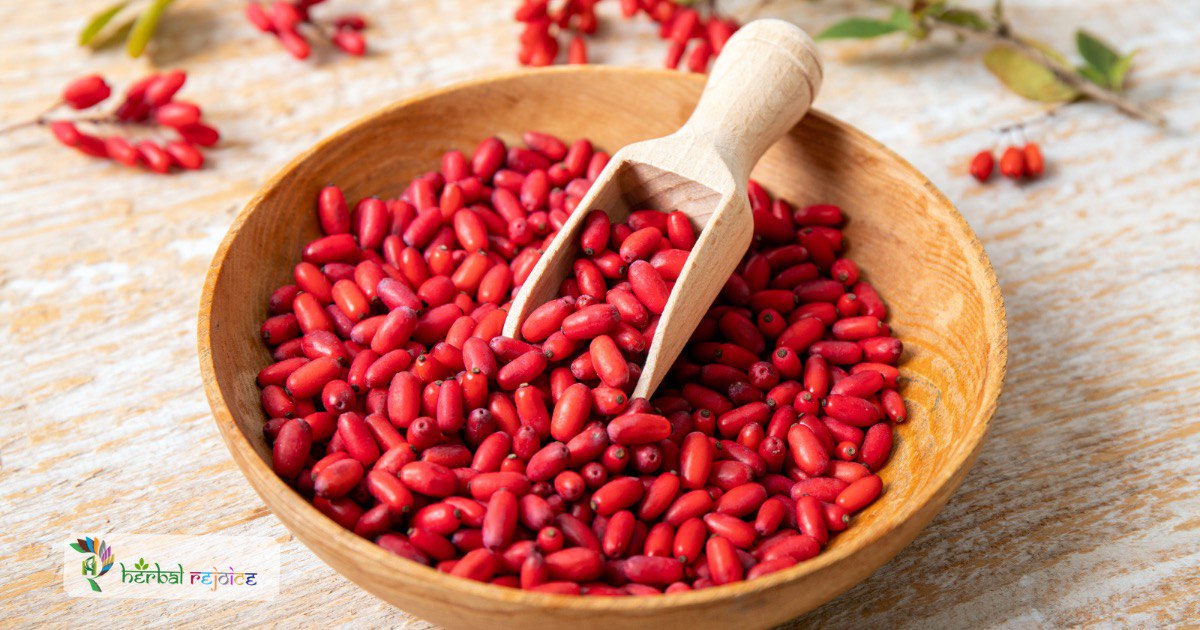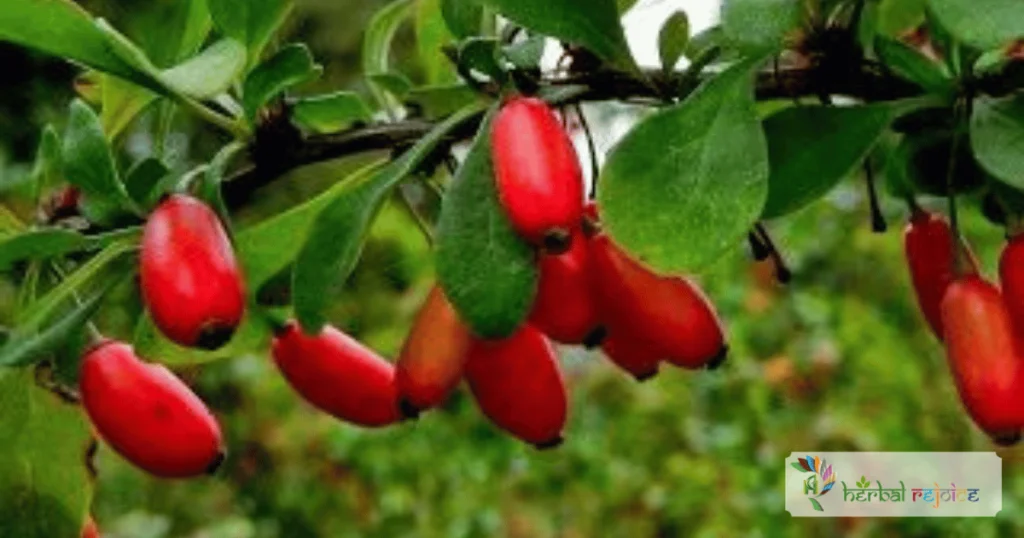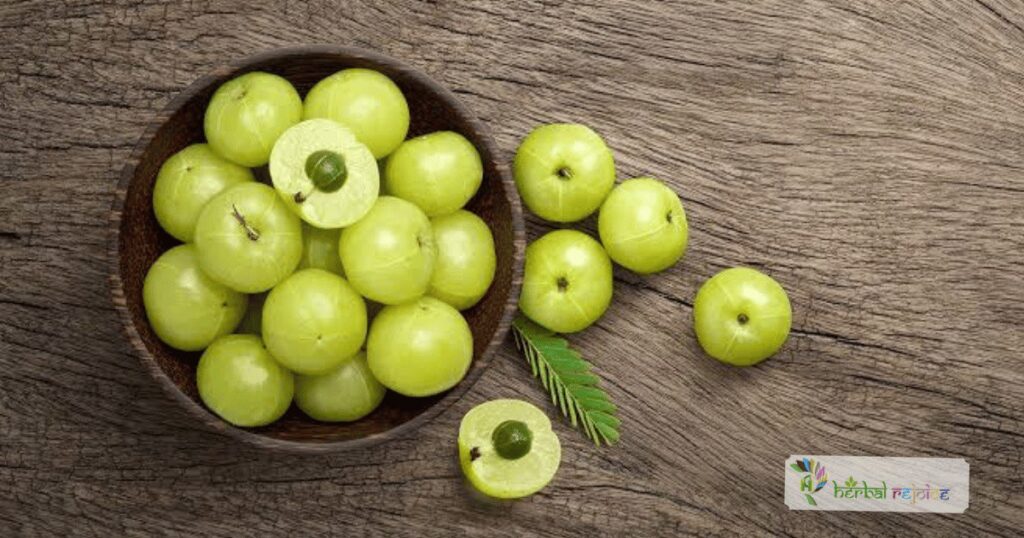Introduction:
Indian Barberry, scientifically known as Berberis aristata DC. subsp. B. asiatica Roxb. ex DC., is a captivating plant belonging to the Berberidaceae family. The bark of Indian Barberry is traditionally used for liver complaints, diarrhea, dysentery, cholera, gastric disorders, and enlargement of the spleen. It may aid in regulating metabolism and supporting healthy digestion.
This comprehensive guide delves into the English and scientific names, natural habitat, traditional uses, chemical composition, and potential health benefits of Indian Barberry.
By unravelling its characteristics, we can gain a deeper understanding of the significance of this plant in traditional medicine and its potential contributions to overall well-being.
Indian Barberry: Names and Habitat:
Indian Barberry, also known as Berberis aristata, belongs to the Berberidaceae family. It can be found in the northwestern Himalayas, Nilgiris, Kulu, and Kumaon.
Traditional Uses and Benefits of Indian Barberry
Indian Barberry has a rich history of traditional use and is renowned for its diverse range of health benefits.
1. Ayurvedic Uses:
Indian Barberry, known in Ayurveda as Daaruharidraa, Daaru, Daarvi, Daarunishaa, Daarurajani, Vrahitaphala, Valliphala, Sthirphala, Pushpaphala, Somakaa, Parjanyaa, Parjani, Kantkateri, Taarthya, and Pachampachaa, has been used for numerous purposes. It has been traditionally employed as a bitter herb, cholagogue, antidiarrheal, stomachic, laxative, diaphoretic, antipyretic, and antiseptic. Externally, it has been applied for opthalmia, conjunctivitis, ulcers, sores, and swollen gums.
2. Unani Uses:
In Unani medicine, Indian Barberry goes by the names Daarhald, Rasaut (extract), and Zarishk (fruit).
3. Siddha/Tamil Uses:
In Siddha and Tamil practices, Indian Barberry is referred to as Marmanjal.
Significant Actions and Benefits Of Indian Barberry
Indian Barberry exhibits various actions and potential health benefits.
1. Anti-inflammatory and Hypoglycemic Properties:
The root bark of Indian Barberry has been recognized for its anti-inflammatory, hypoglycemic, hypotensive, antiamoebic, anticoagulant, and antibacterial properties. These properties may contribute to its potential benefits in conditions related to inflammation, blood sugar, and cardiovascular health.
2. Bark for Liver Complaints and Digestive Disorders:
The bark of Indian Barberry is traditionally used for liver complaints, diarrhea, dysentery, cholera, gastric disorders, and enlargement of the spleen. It may aid in regulating metabolism and supporting healthy digestion.
3. Berries as an Antiscorbutic and Laxative:
The berries of Indian Barberry are regarded as antiscorbutic and laxative. They may have properties that support the prevention of scurvy and promote healthy bowel movements.

Chemical Composition and Key Components Of Indian Barberry
Indian Barberry possesses various chemical compounds that contribute to its potential health benefits.
1. Berberine:
Indian Barberry contains berberine, a prominent alkaloid known for its antibacterial, anti-inflammatory, and antineoplastic properties. Berberine is also used as an intestinal antiseptic and bitter stomachic.
2. Other Alkaloids and Compounds:
Indian Barberry contains additional alkaloids such as berberubine, palmatine, oxyacanthine, bervulcine, and magnoflorine. These compounds may contribute to the plant’s overall chemical composition and potential therapeutic effects.
Safety Considerations:
Indian Barberry offers potential health benefits, it is essential to exercise caution and consider safety considerations.
1. Professional Guidance:
When incorporating Indian Barberry into your wellness routine, it is advisable to consult qualified practitioners or healthcare professionals for guidance, especially if you have any existing health conditions or are taking medications.
2. Dosage and Administration:
The recommended dosage for Indian Barberry extract is 1-3g according to the Central Council for Research in Ayurvedic Sciences (CCRAS). Dried stem decoction can be taken in quantities of 5-10ml.
Conclusion:
Indian Barberry, scientifically known as Berberis aristata DC. subsp. B. asiatica Roxb. ex DC., holds significant potential for various health benefits. Its traditional uses as a bitter herb, antiseptic, and digestive aid have made it highly valued in traditional medicine systems.
The presence of berberine and other alkaloids in Indian Barberry further supports its potential therapeutic applications. By embracing the wisdom of traditional practices, Indian Barberry may provide a natural approach to support specific health concerns.
As always, individual circumstances and safety considerations should be taken into account to ensure safe and effective use.
Frequently Asked Questions(FAQs)
What is Indian Barberry scientifically known as?
Indian Barberry is scientifically known as Berberis aristata DC. subsp. B. asiatica Roxb. ex DC.
Where is Indian Barberry found?
Indian Barberry can be found in various regions, including the northwestern Himalayas, Nilgiris, Kulu, and Kumaon.
What are some traditional uses of Indian Barberry in Ayurveda?
In Ayurveda, Indian Barberry has been traditionally used as a bitter herb, cholagogue, antidiarrheal, stomachic, laxative, diaphoretic, antipyretic, and antiseptic. It has also been applied externally for opthalmia, conjunctivitis, ulcers, sores, and swollen gums.
What are the traditional uses of Indian Barberry in Unani medicine?
In Unani medicine, Indian Barberry is used for various purposes and goes by the names Daarehald, Rasaut (extract), and Zarishk (fruit).
How is Indian Barberry referred to in Siddha/Tamil practices?
In Siddha and Tamil practices, Indian Barberry is referred to as Marmanjal.
What are some significant actions and benefits of Indian Barberry?
Indian Barberry possesses anti-inflammatory, hypoglycemic, hypotensive, antiamoebic, anticoagulant, and antibacterial properties. It has traditionally been used for liver complaints, digestive disorders, gastric disorders, dysentery, diarrhea, and enlargement of the spleen.
What is the key compound found in Indian Barberry?
Indian Barberry contains berberine, a prominent alkaloid with antibacterial, anti-inflammatory, and antineoplastic properties.
Are there any safety considerations when using Indian Barberry?
It is advisable to consult qualified practitioners or healthcare professionals for guidance when incorporating Indian Barberry into your wellness routine, especially if you have existing health conditions or are taking medications.
What is the recommended dosage for Indian Barberry extract?
The recommended dosage for Indian Barberry extract is 1-3g according to the Central Council for Research in Ayurvedic Sciences (CCRAS).
How is dried stem decoction of Indian Barberry administered? Dried stem decoction of Indian Barberry can be taken in quantities of 5-10ml.
Can Indian Barberry be used for digestive issues?
Yes, Indian Barberry has been traditionally used for digestive disorders, diarrhea, and dysentery, suggesting potential benefits for digestive health.
Does Indian Barberry have antibacterial properties?
Yes, Indian Barberry contains berberine, which is known for its antibacterial properties.
Can Indian Barberry be used for eye conditions?
Indian Barberry has been traditionally applied for opthalmia, conjunctivitis, and swollen gums, suggesting potential benefits for eye health.
Can Indian Barberry support cardiovascular health?
The anti-inflammatory and hypotensive properties of Indian Barberry may potentially contribute to cardiovascular health benefits.
Can Indian Barberry be used for skin conditions?
Indian Barberry has traditionally been used for ulcers and sores, indicating potential benefits for skin health. However, individual responses may vary.
Can Indian Barberry be used for fever and infections?
Indian Barberry has antipyretic and antibacterial properties and has been traditionally used for various infections.
What are the traditional uses of Indian Barberry for liver complaints?
Indian Barberry has been traditionally used for liver complaints, suggesting potential benefits for liver health.
Is Indian Barberry safe to use during pregnancy?
Pregnant individuals should consult healthcare professionals before using Indian Barberry to ensure safety and appropriate usage.
Can Indian Barberry interact with medications?
Indian Barberry may interact with certain medications. It is important to consult a healthcare professional if you are taking any medications before using Indian Barberry.
Can Indian Barberry be used for weight management?
While Indian Barberry has been traditionally used for digestive disorders, further research is needed to establish its specific benefits for weight management.


